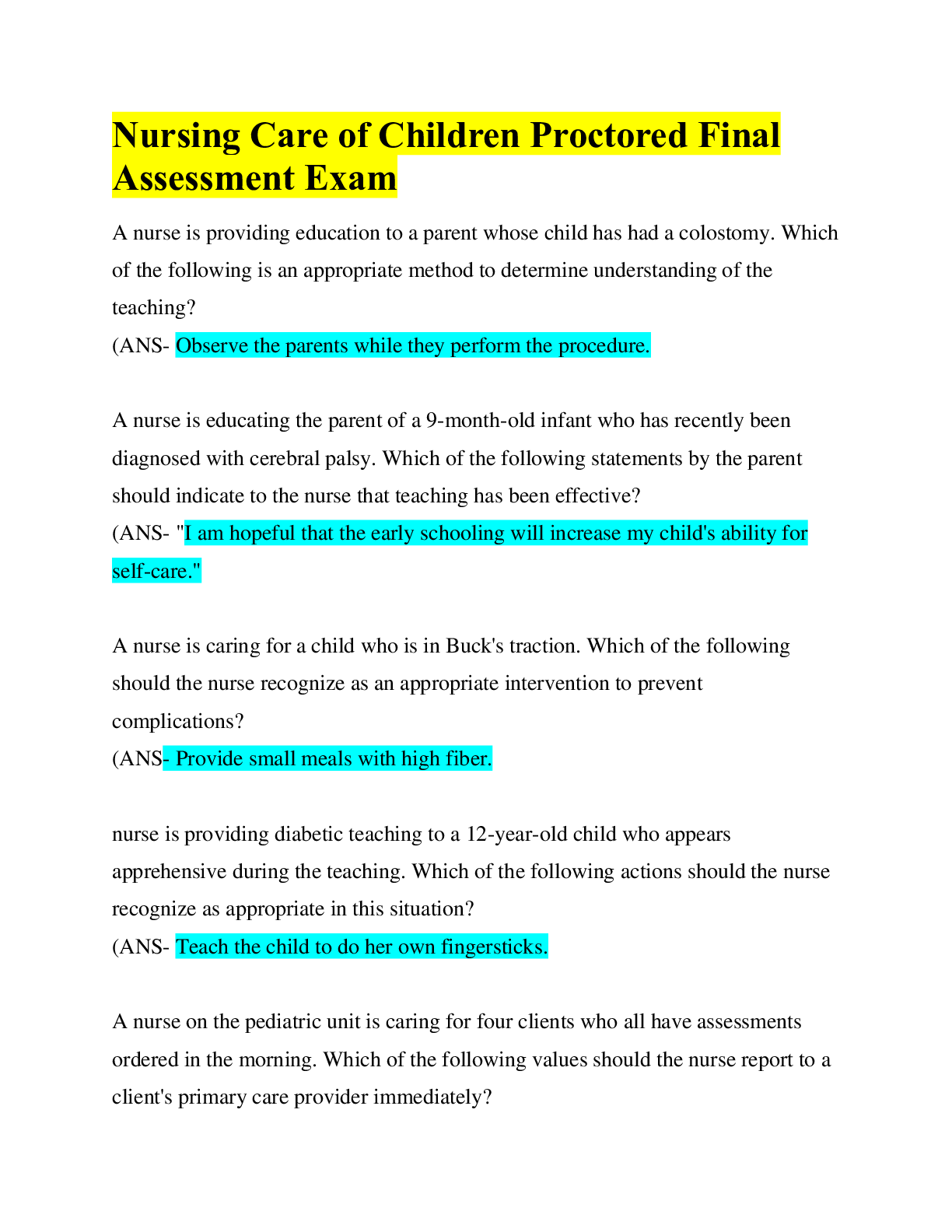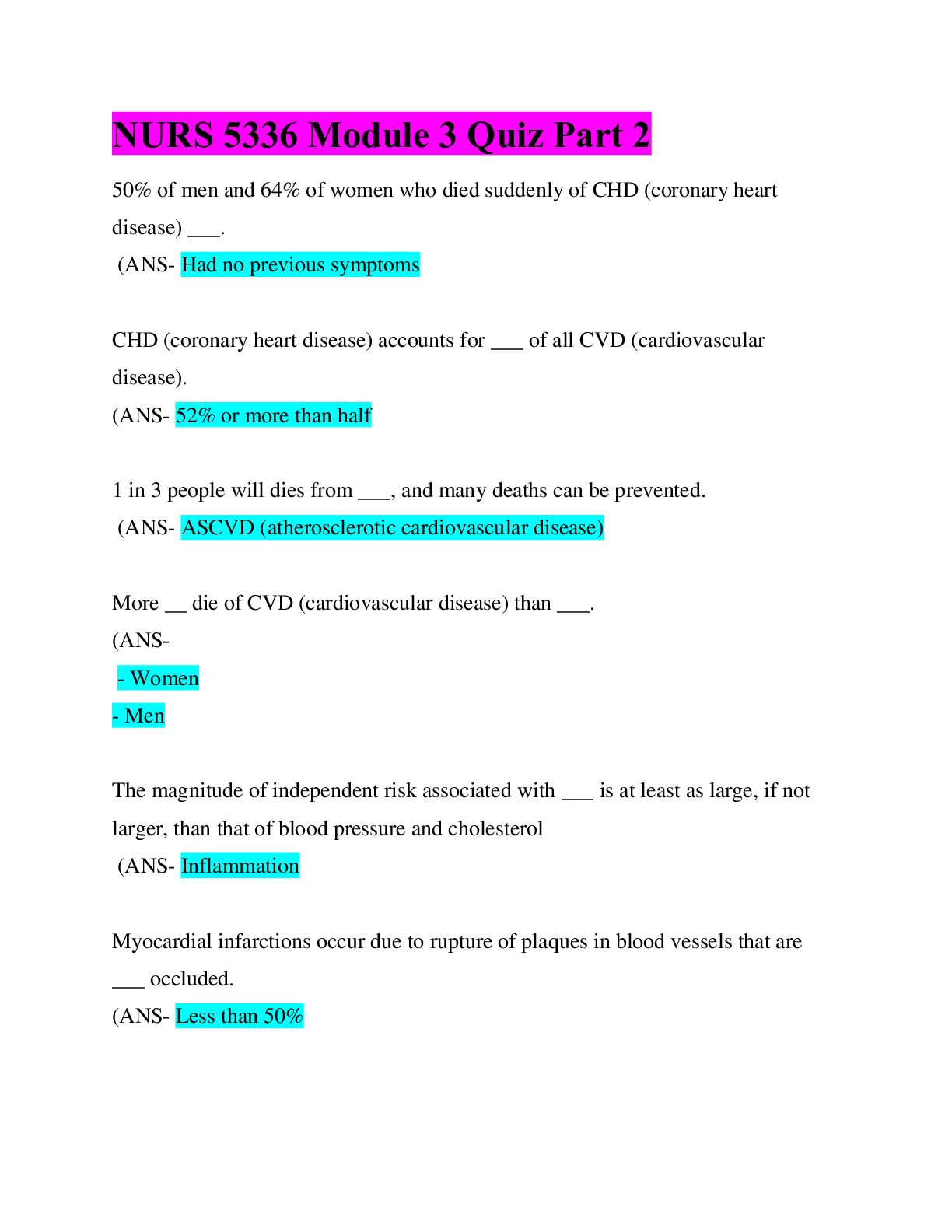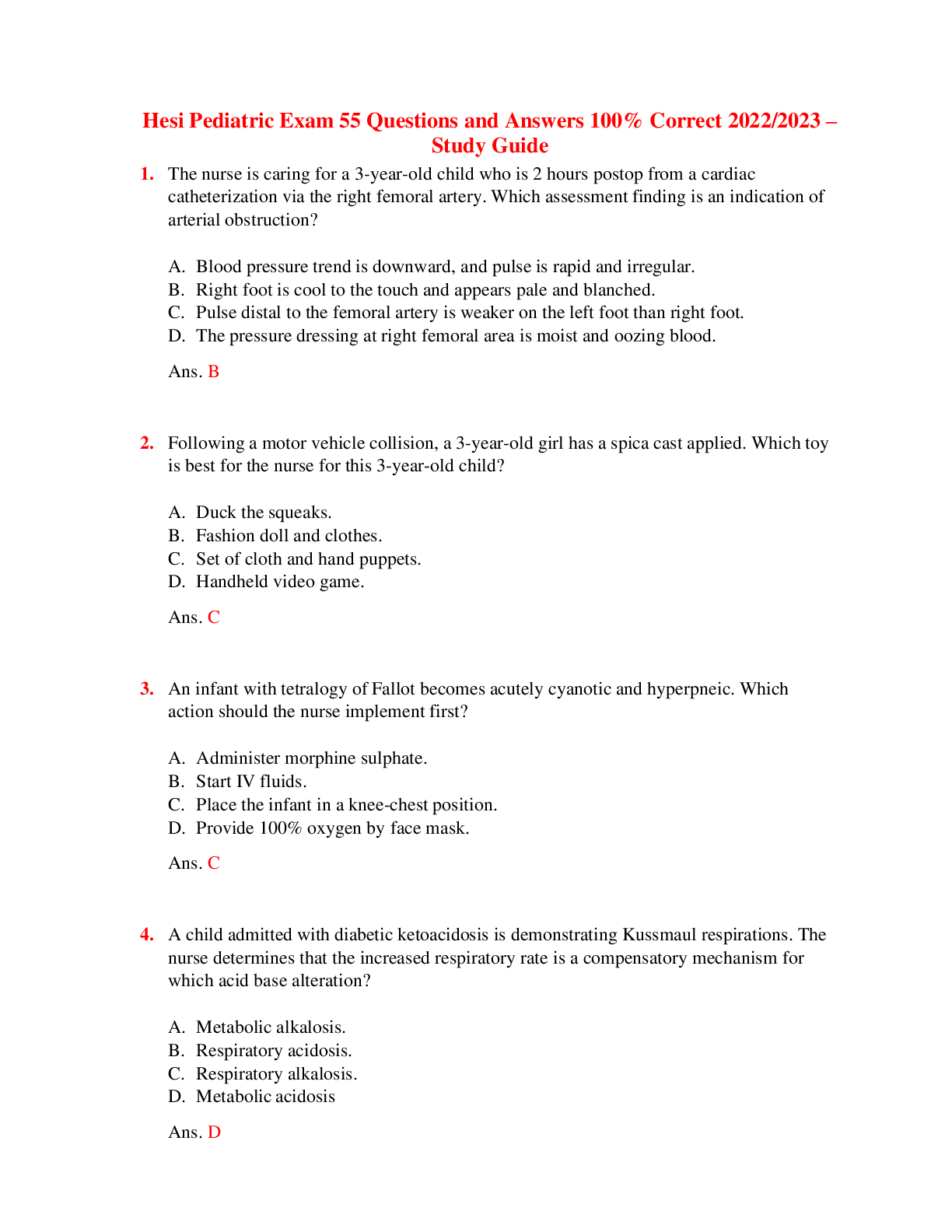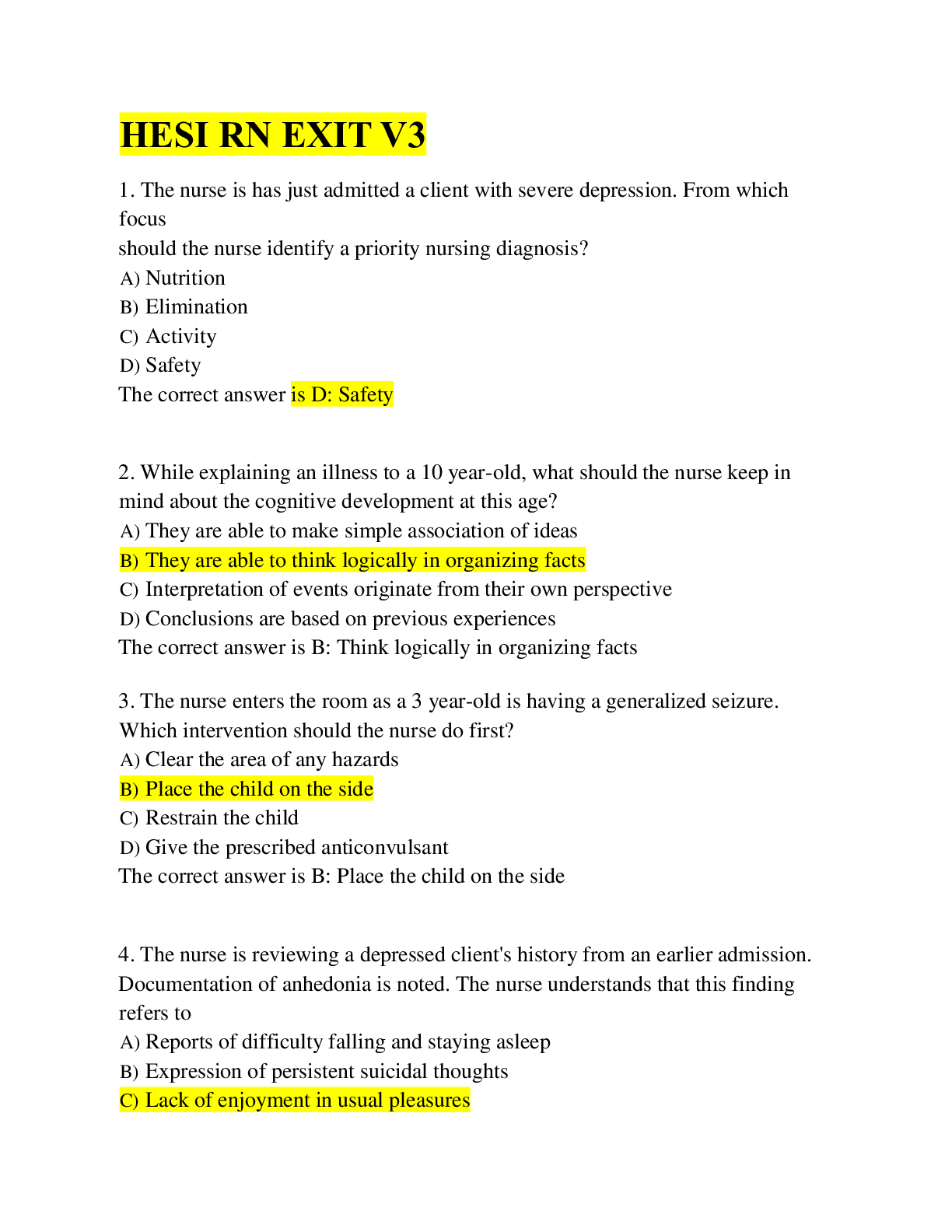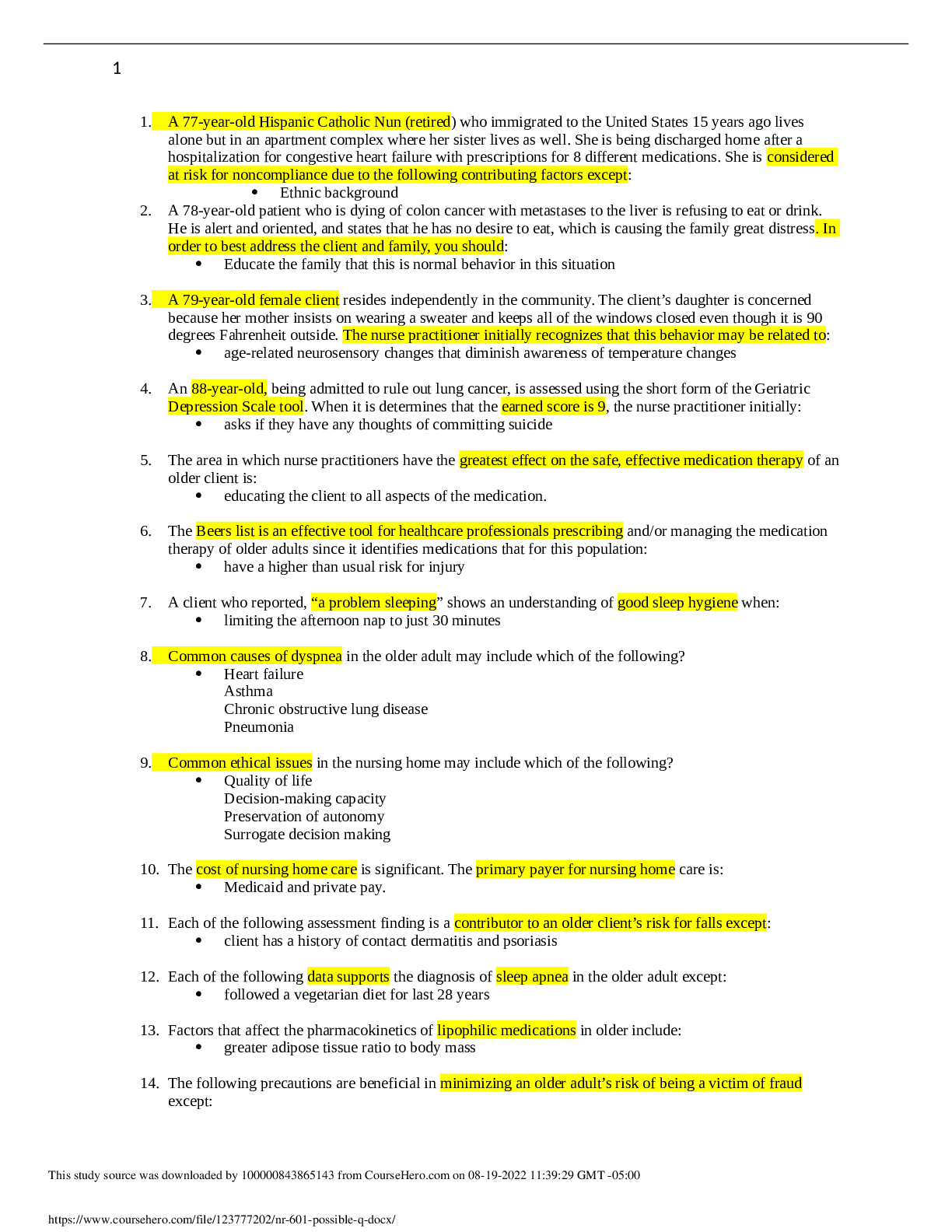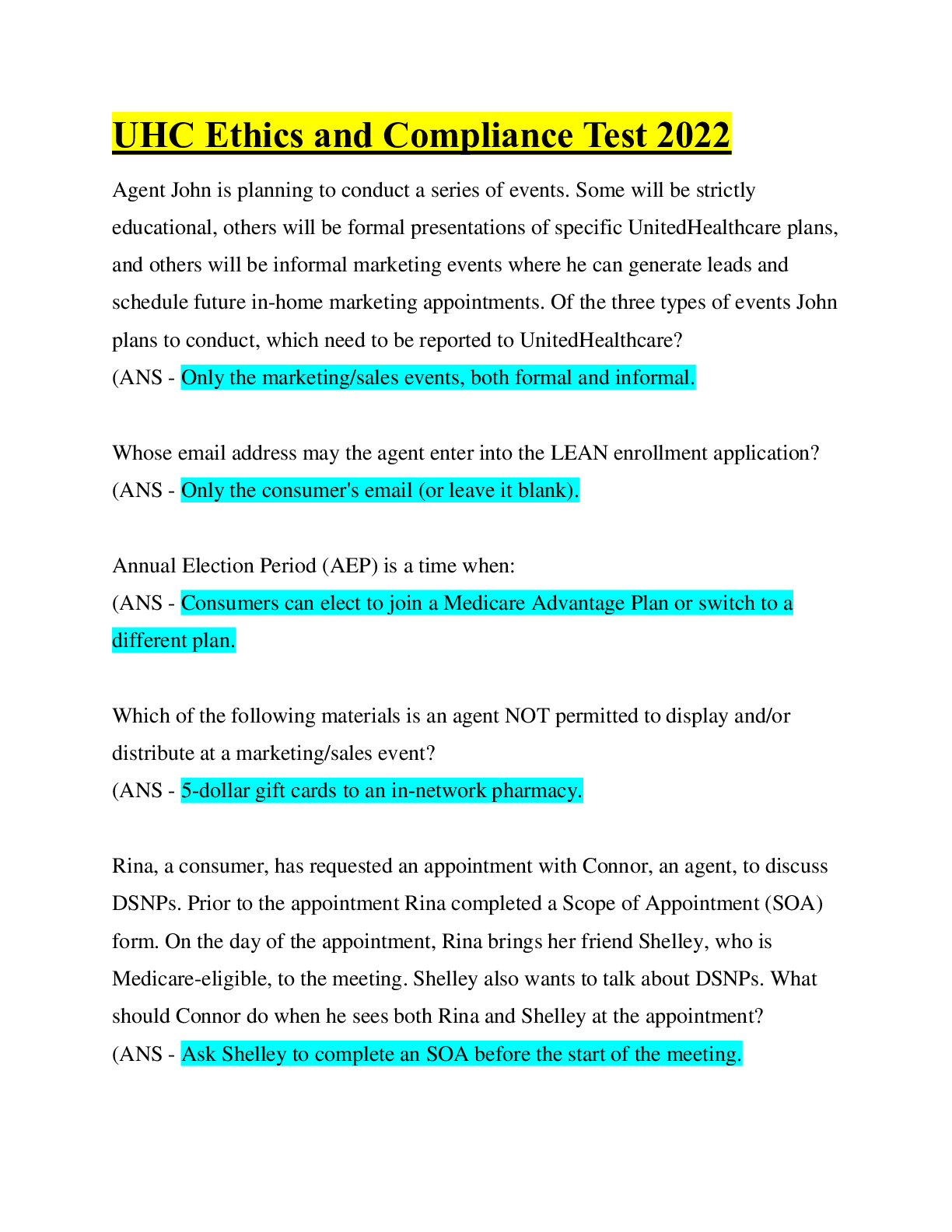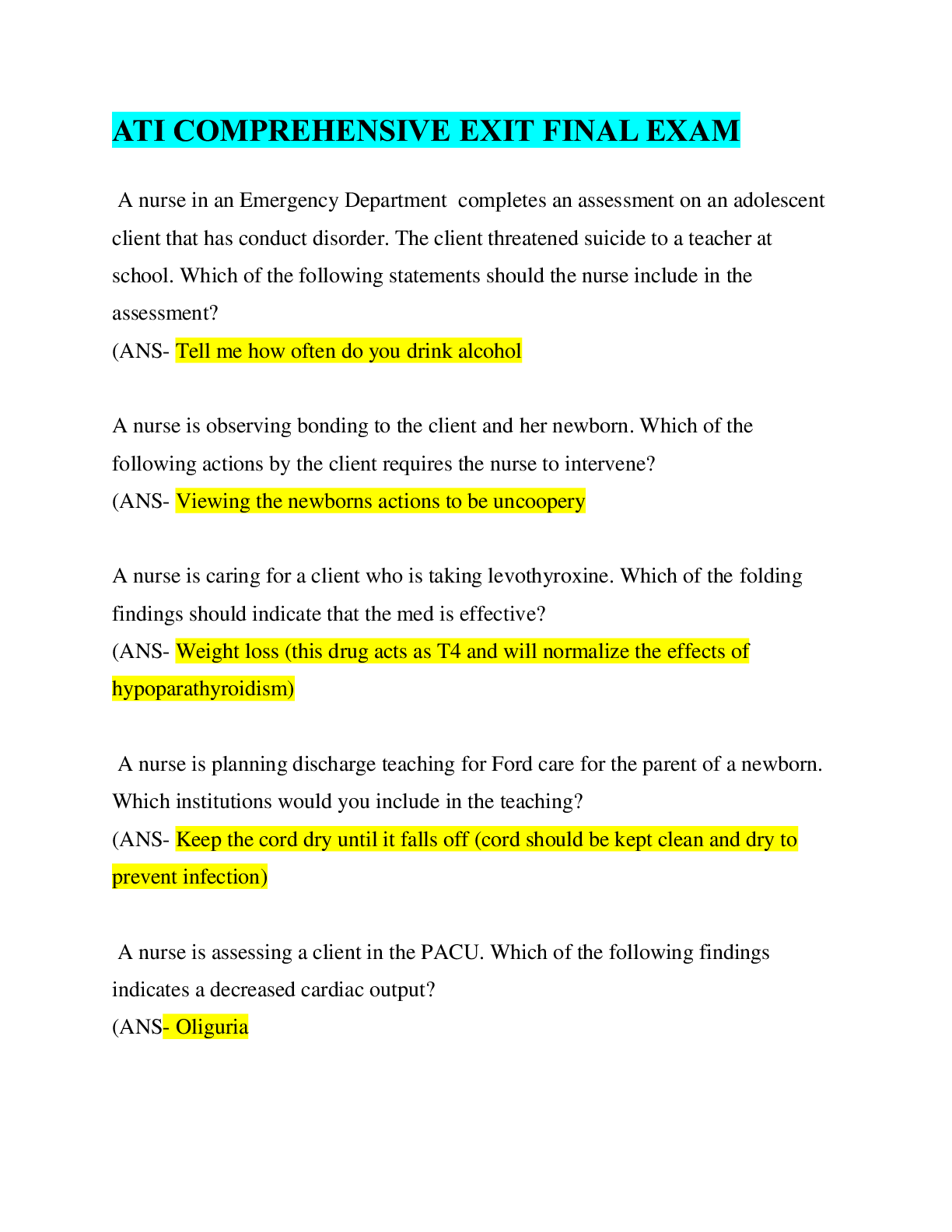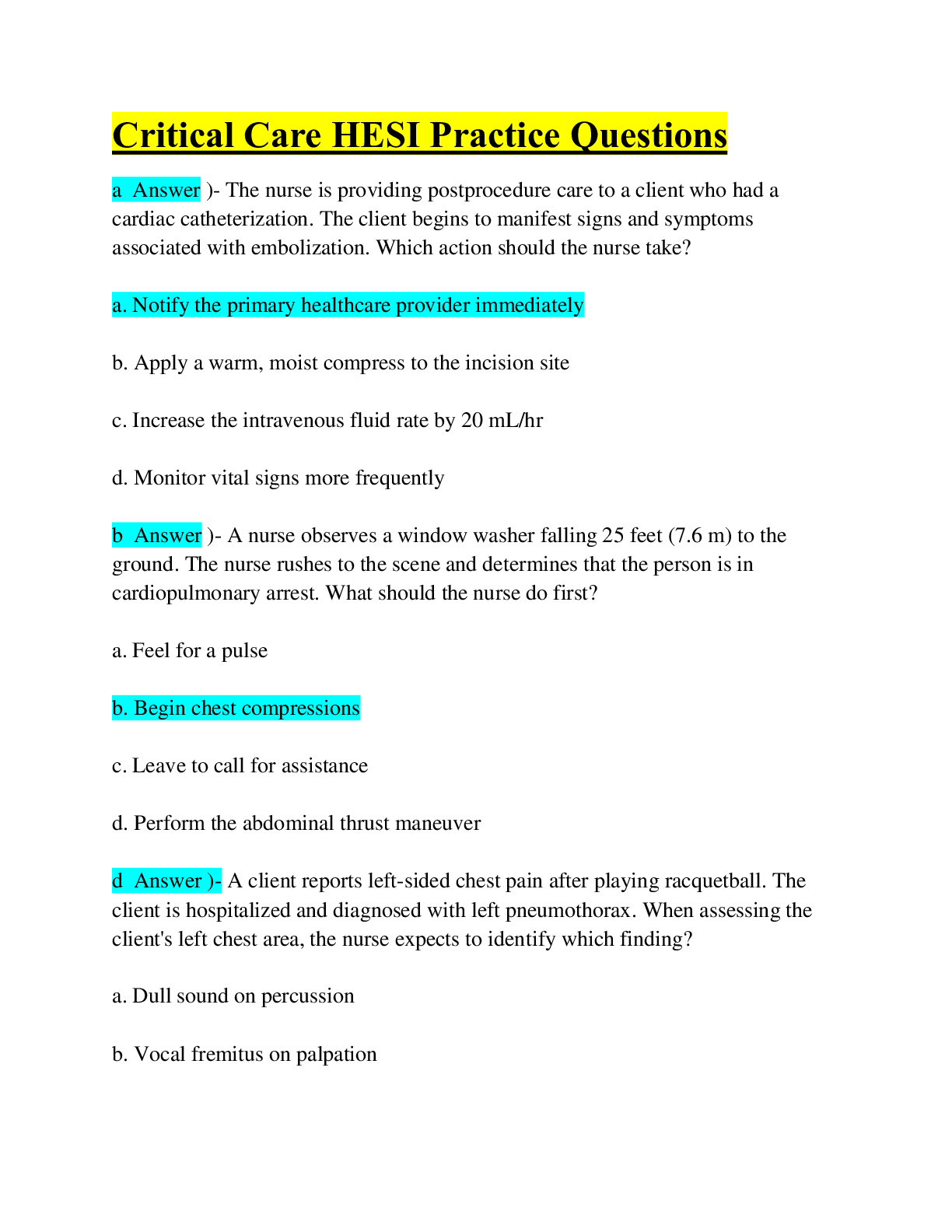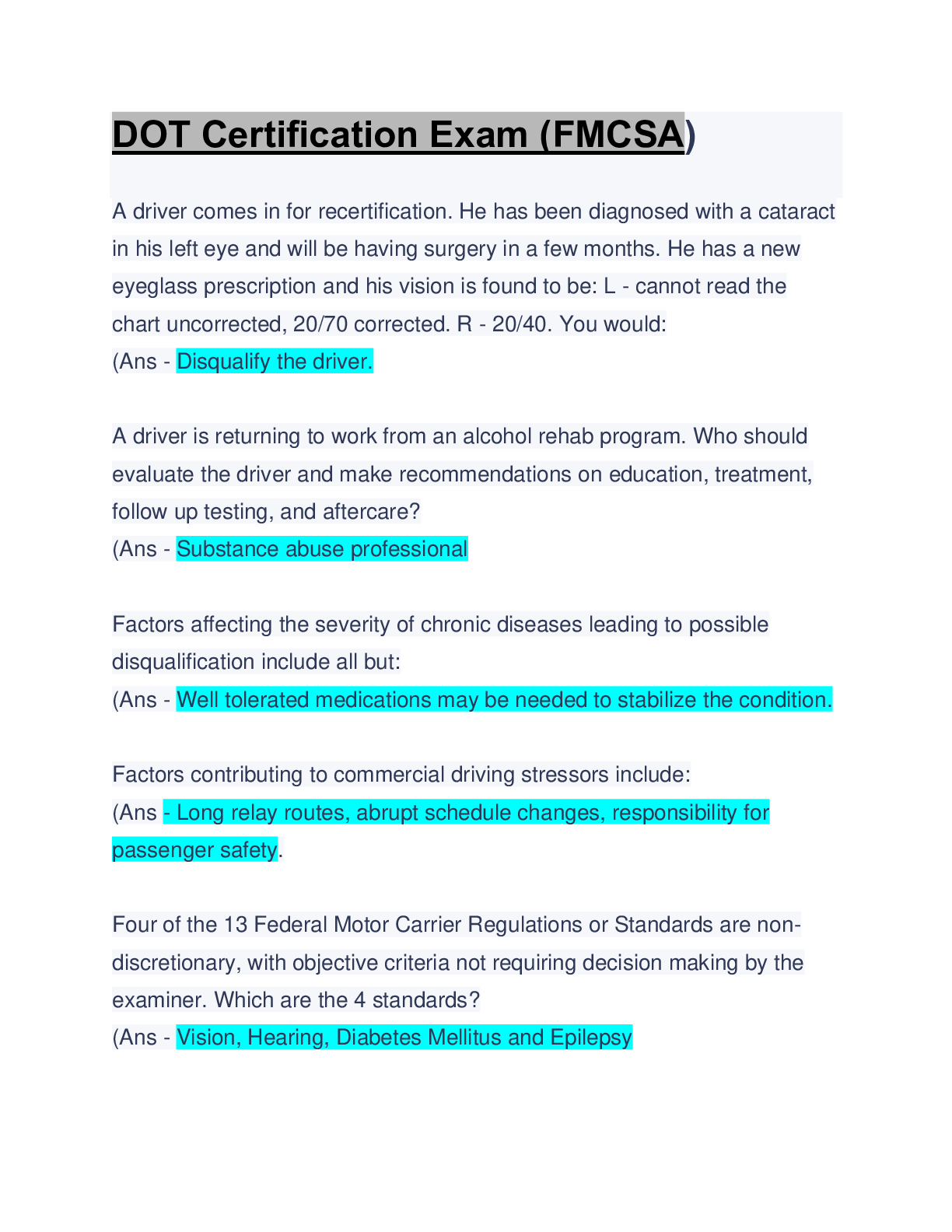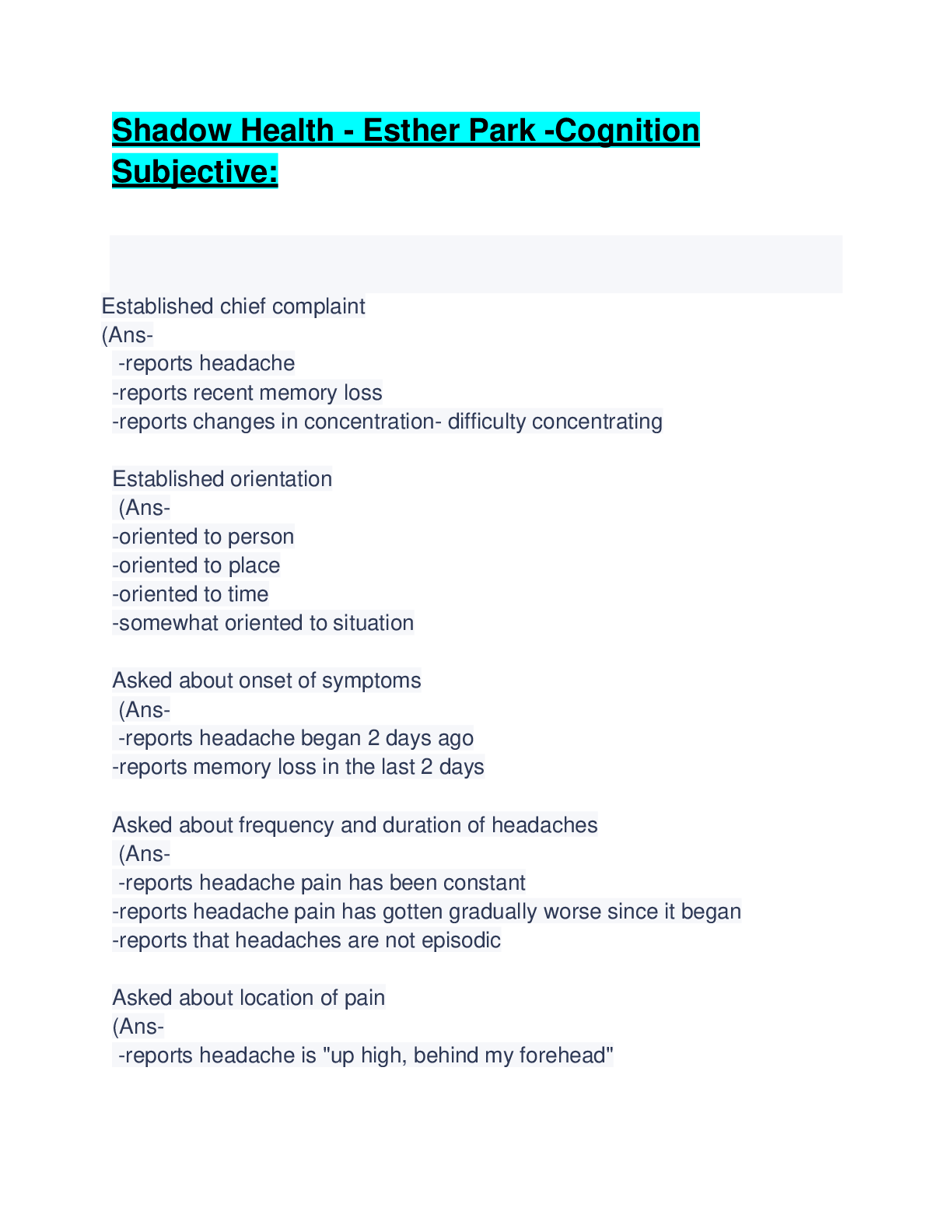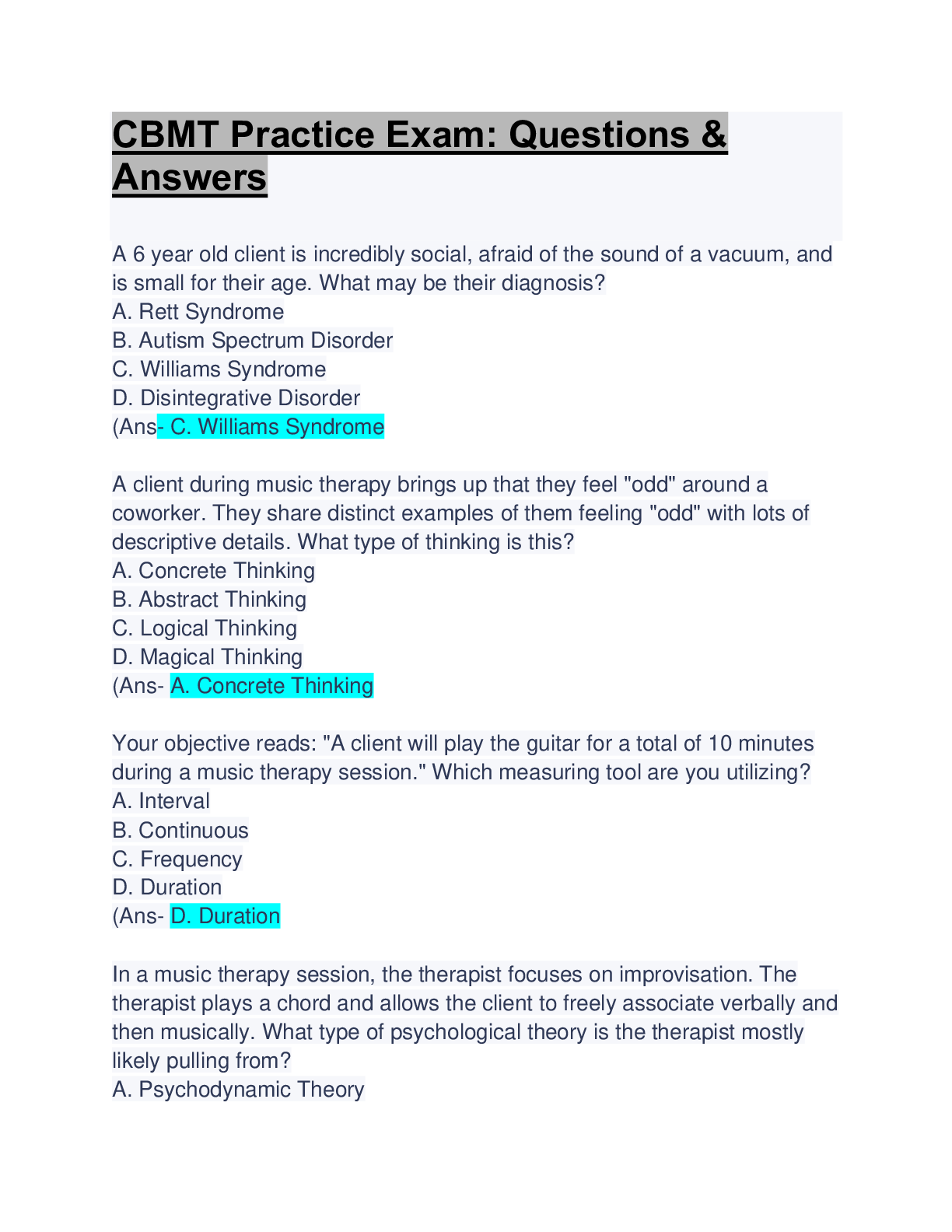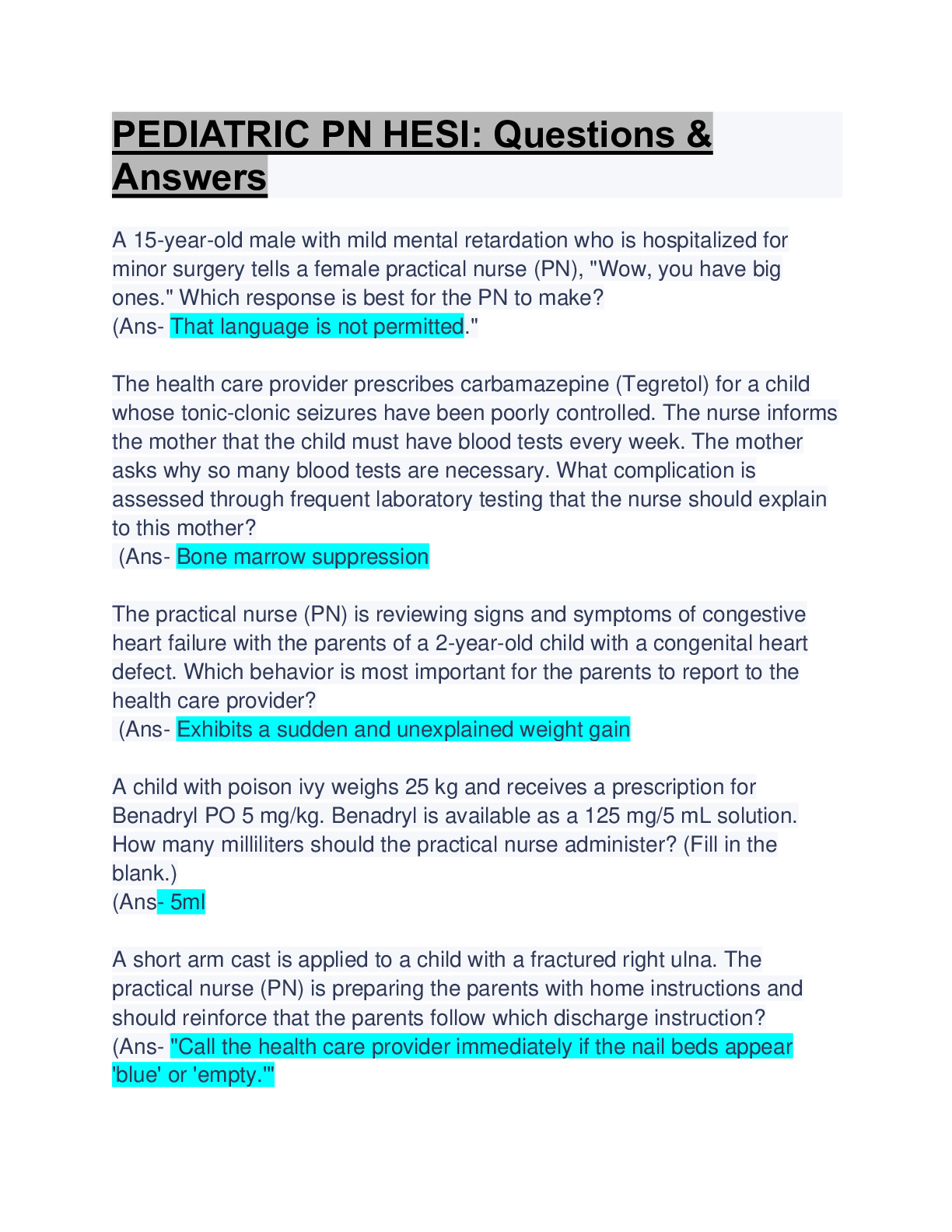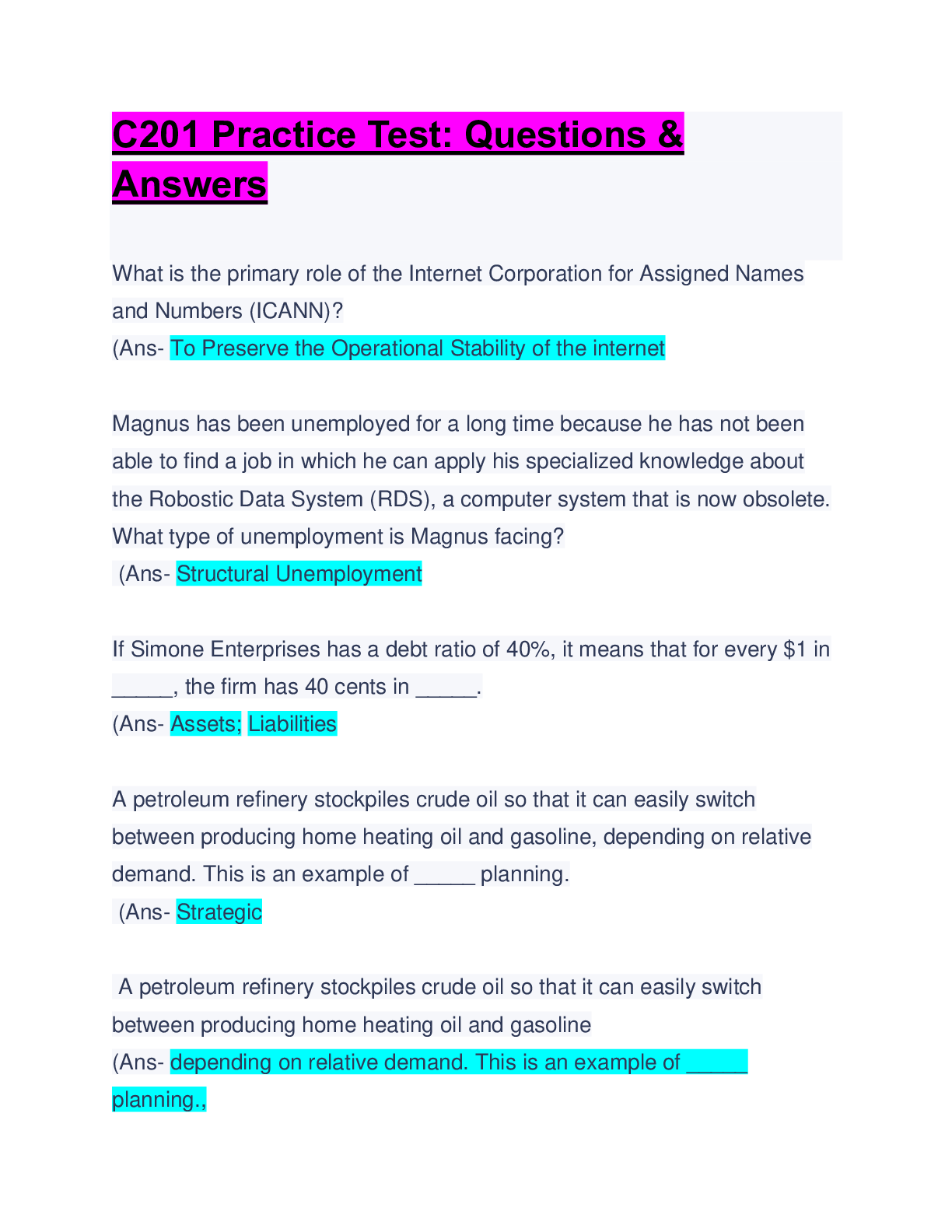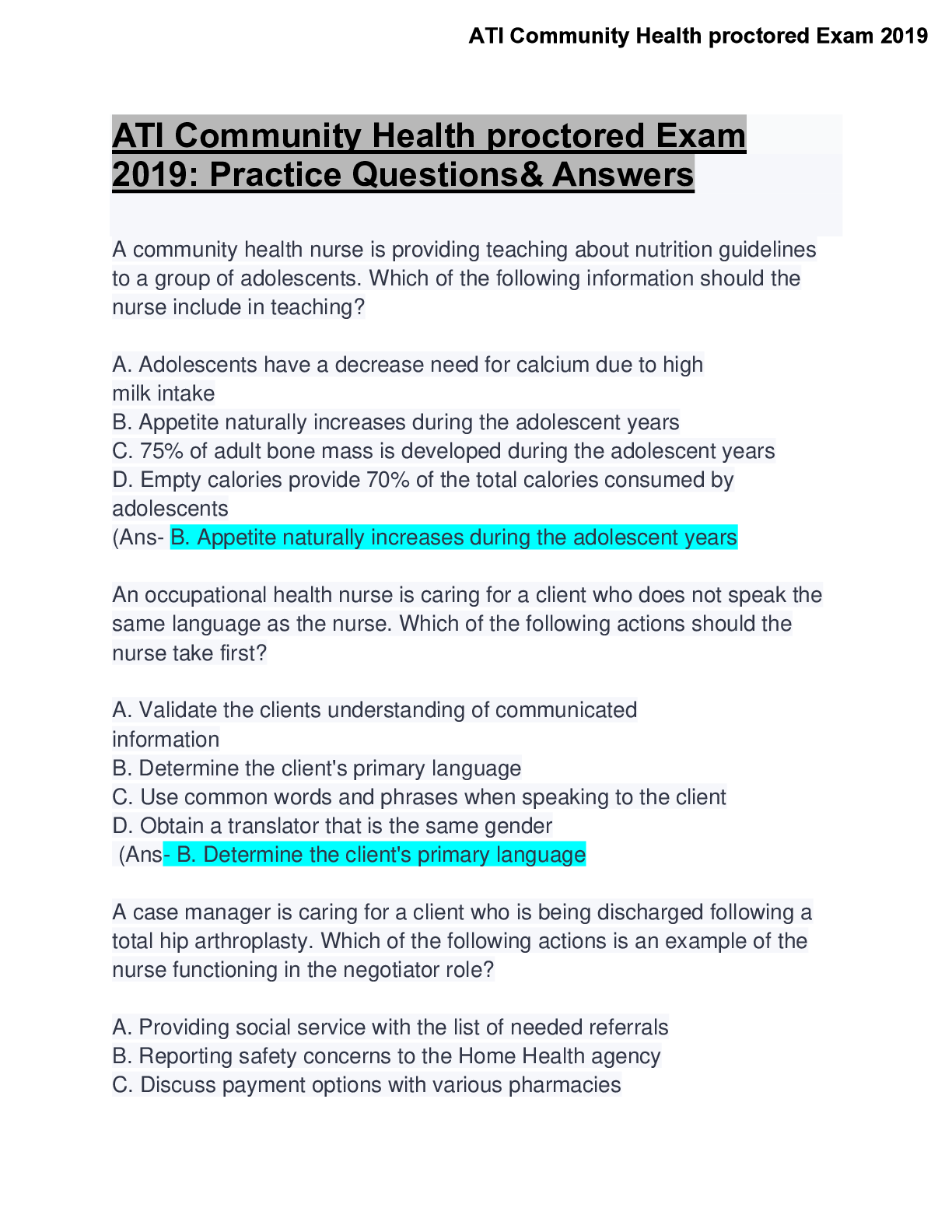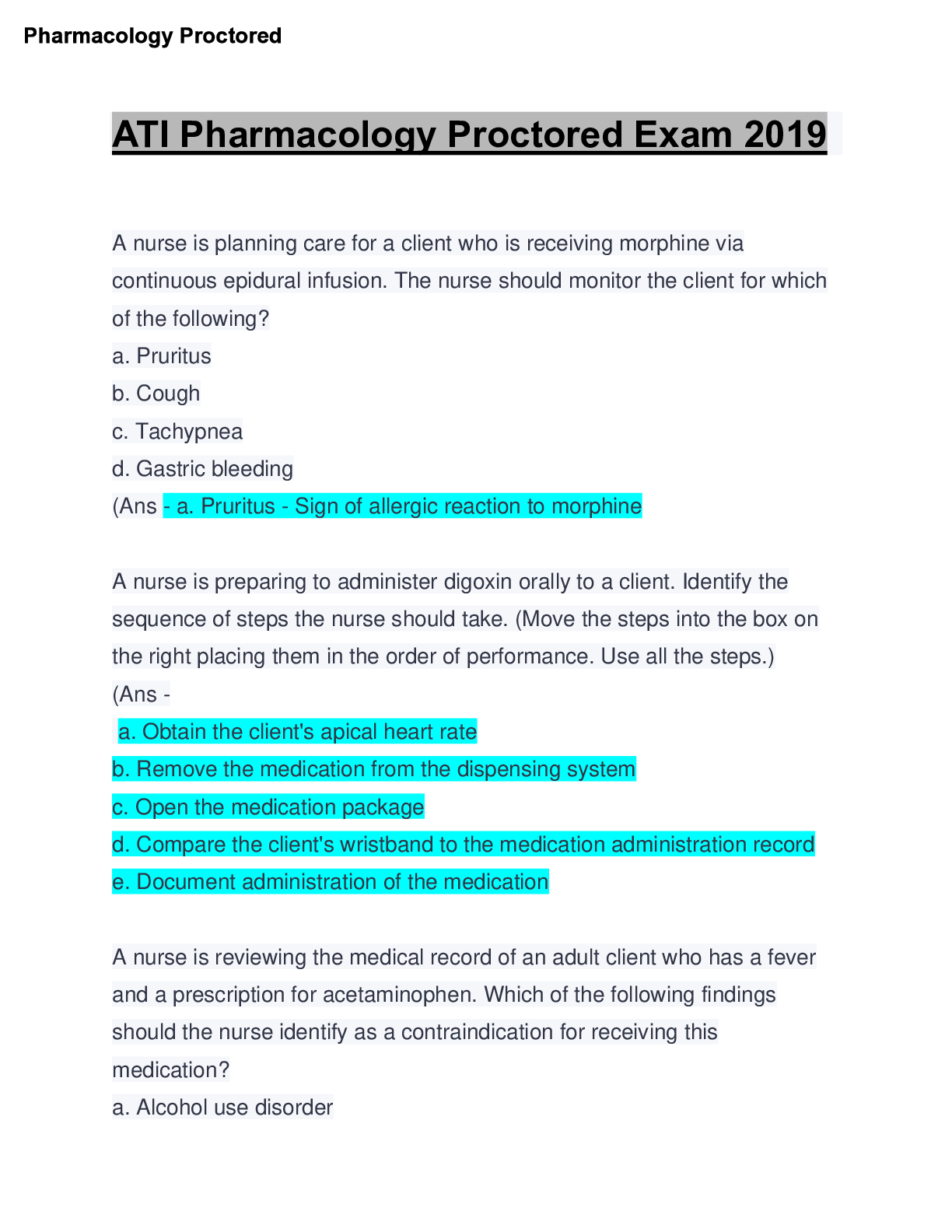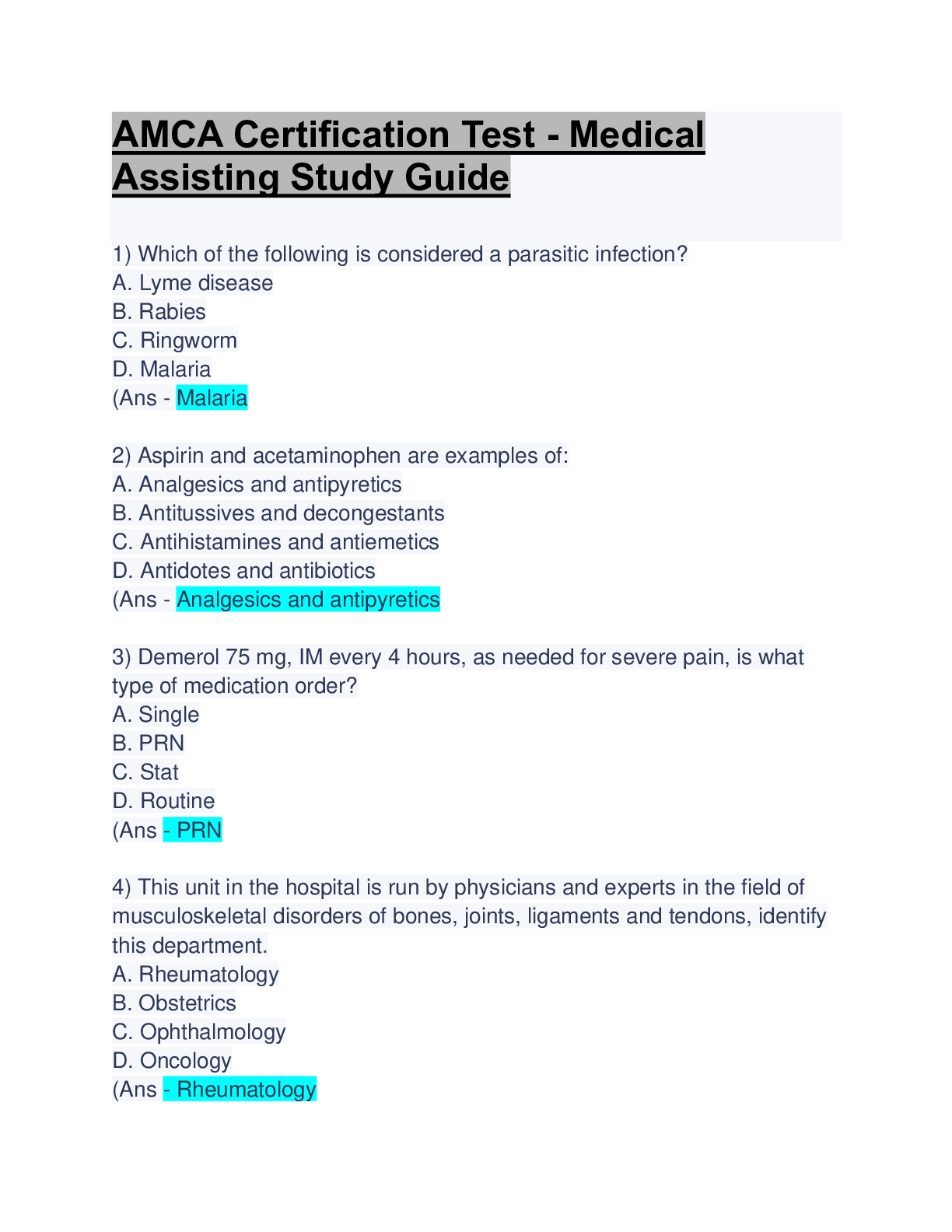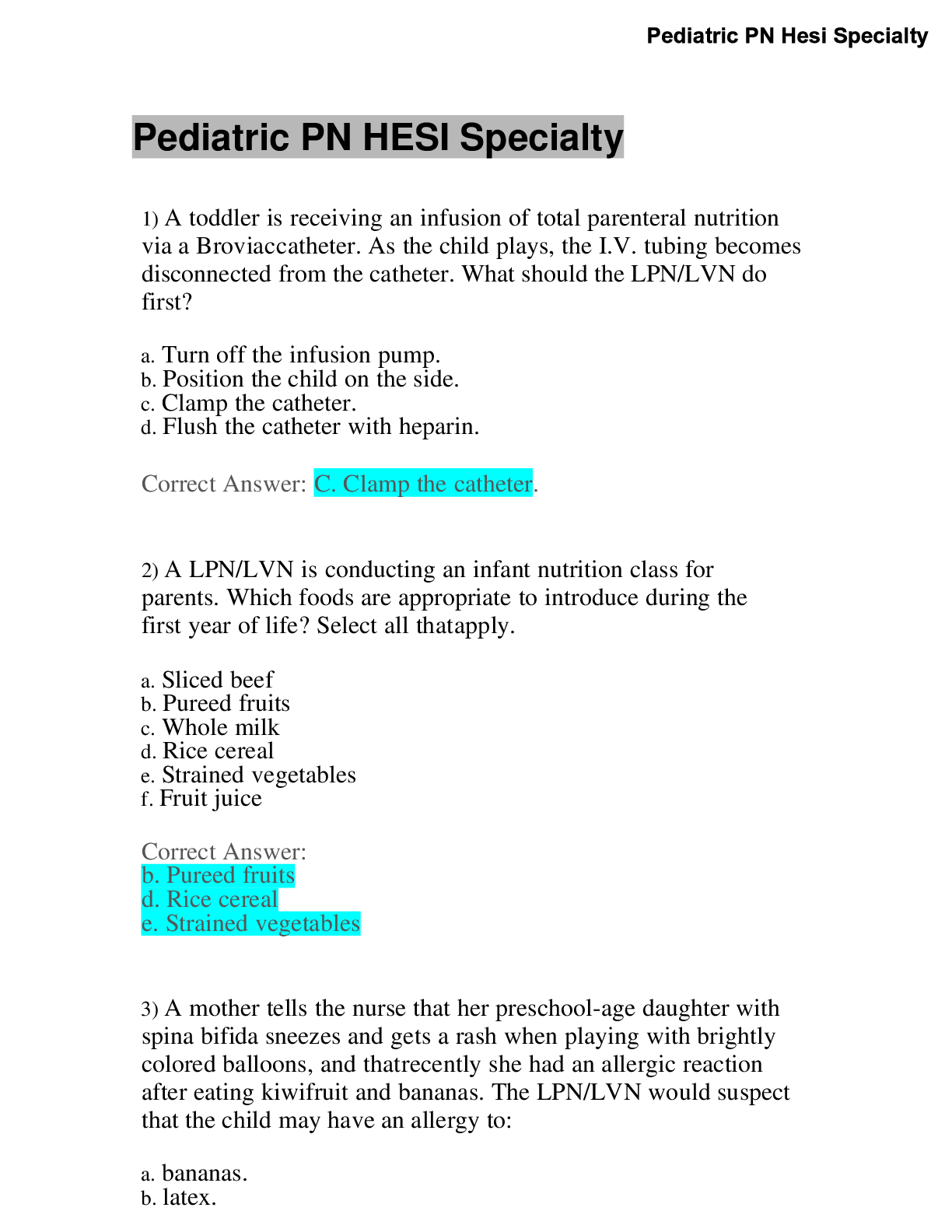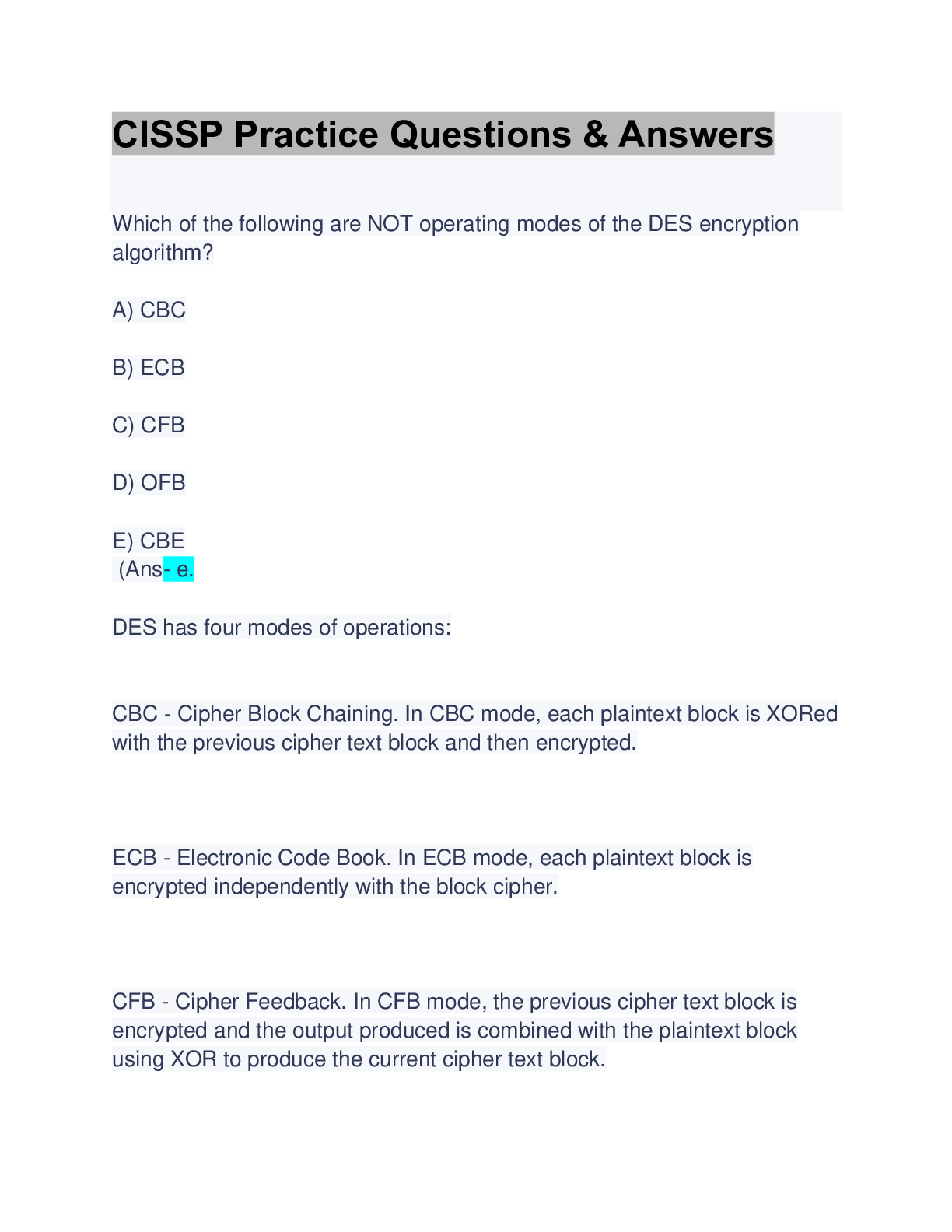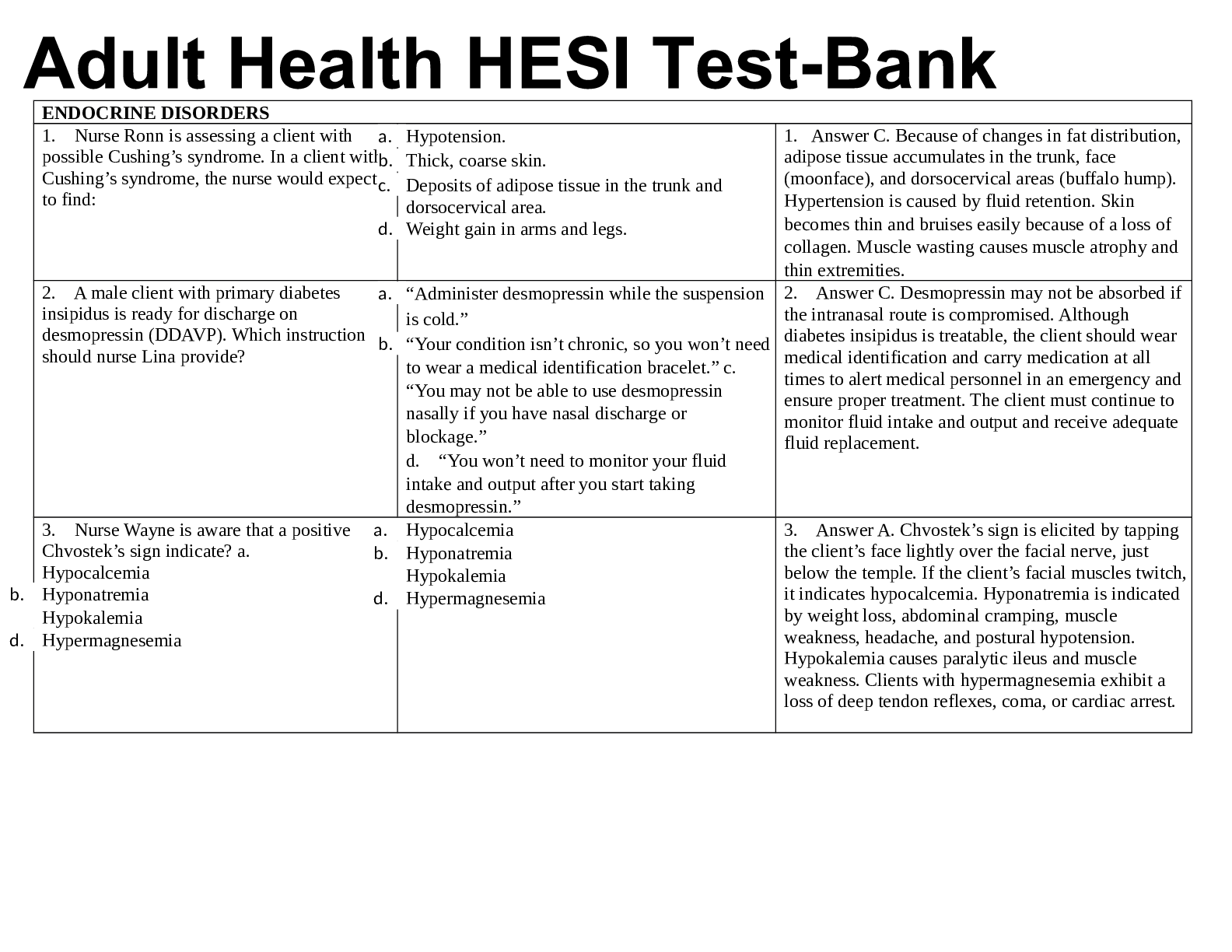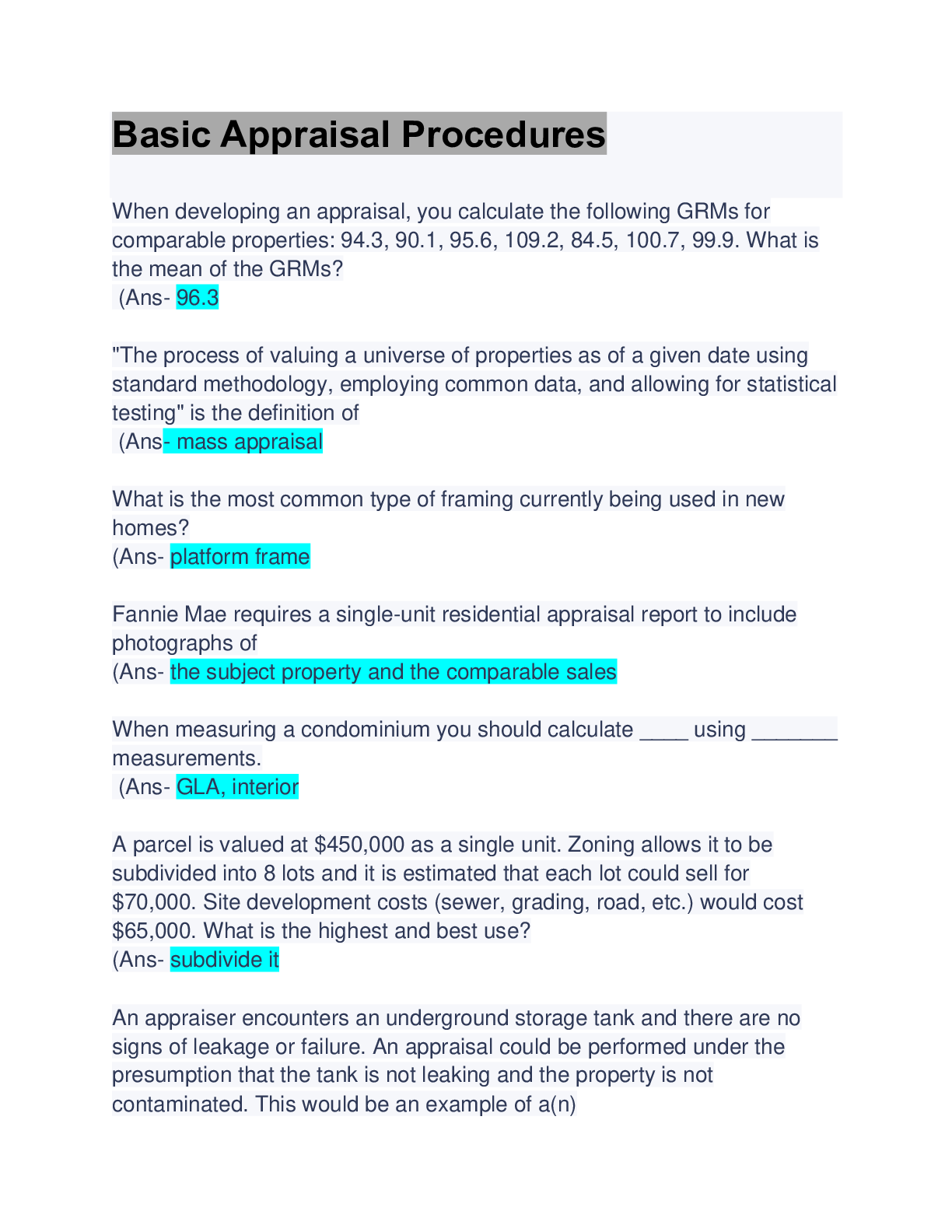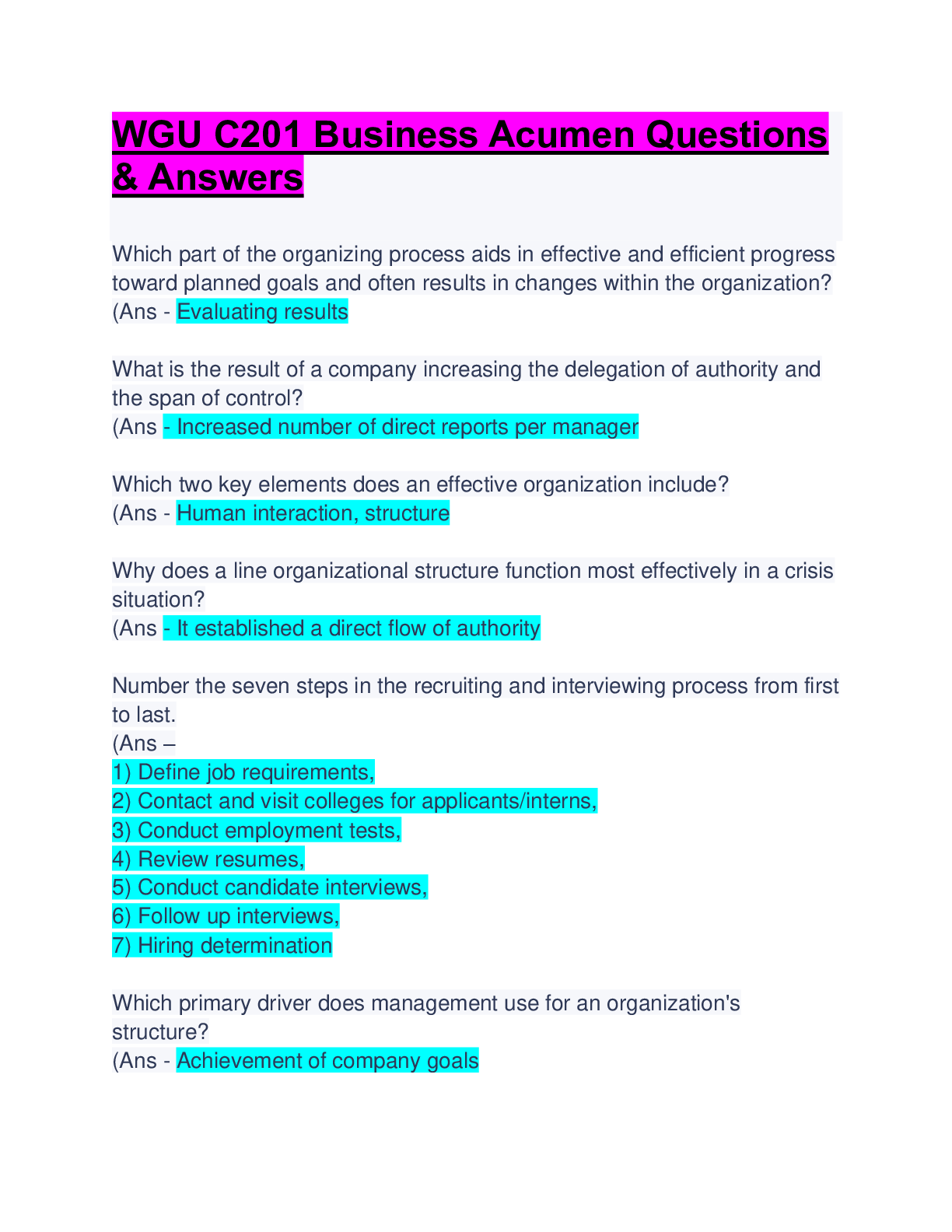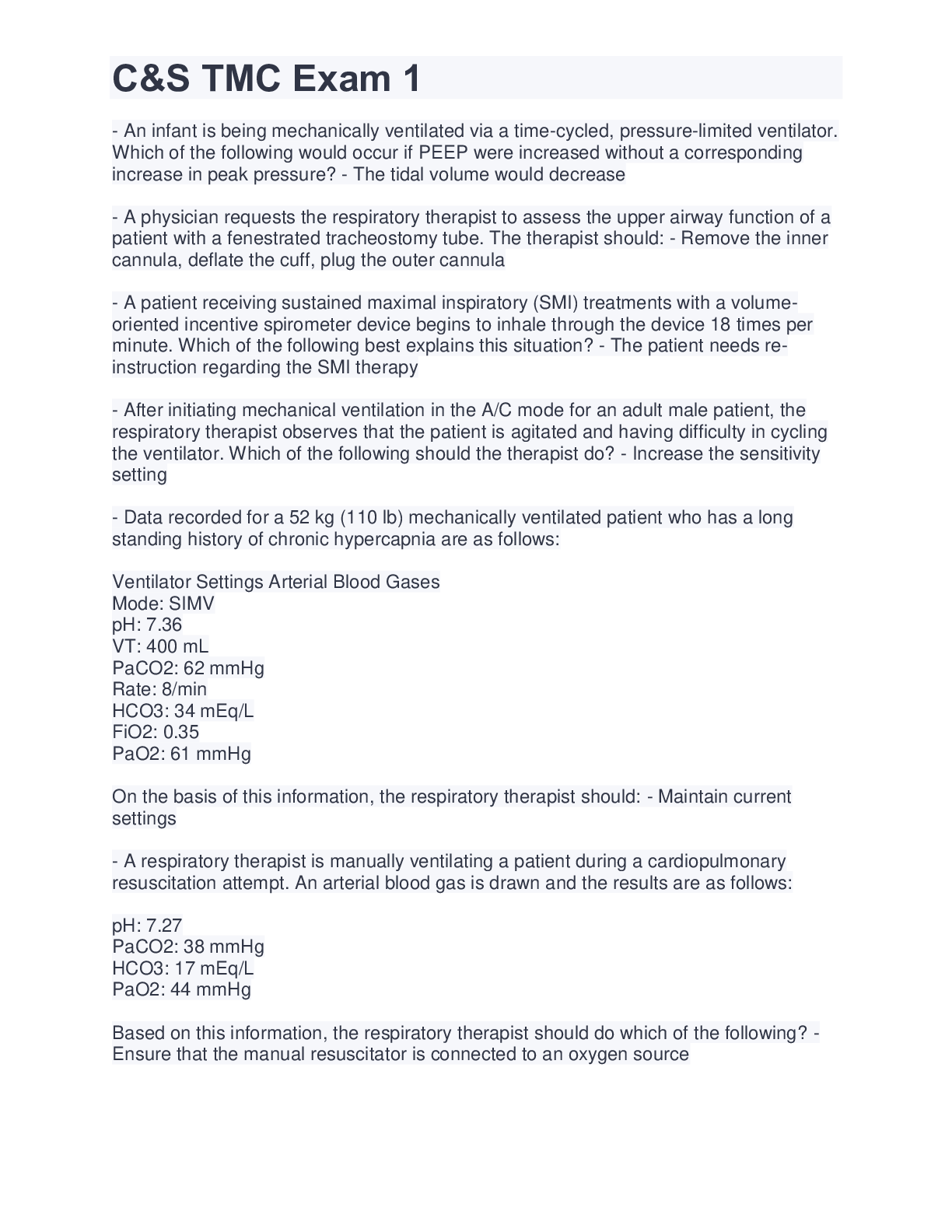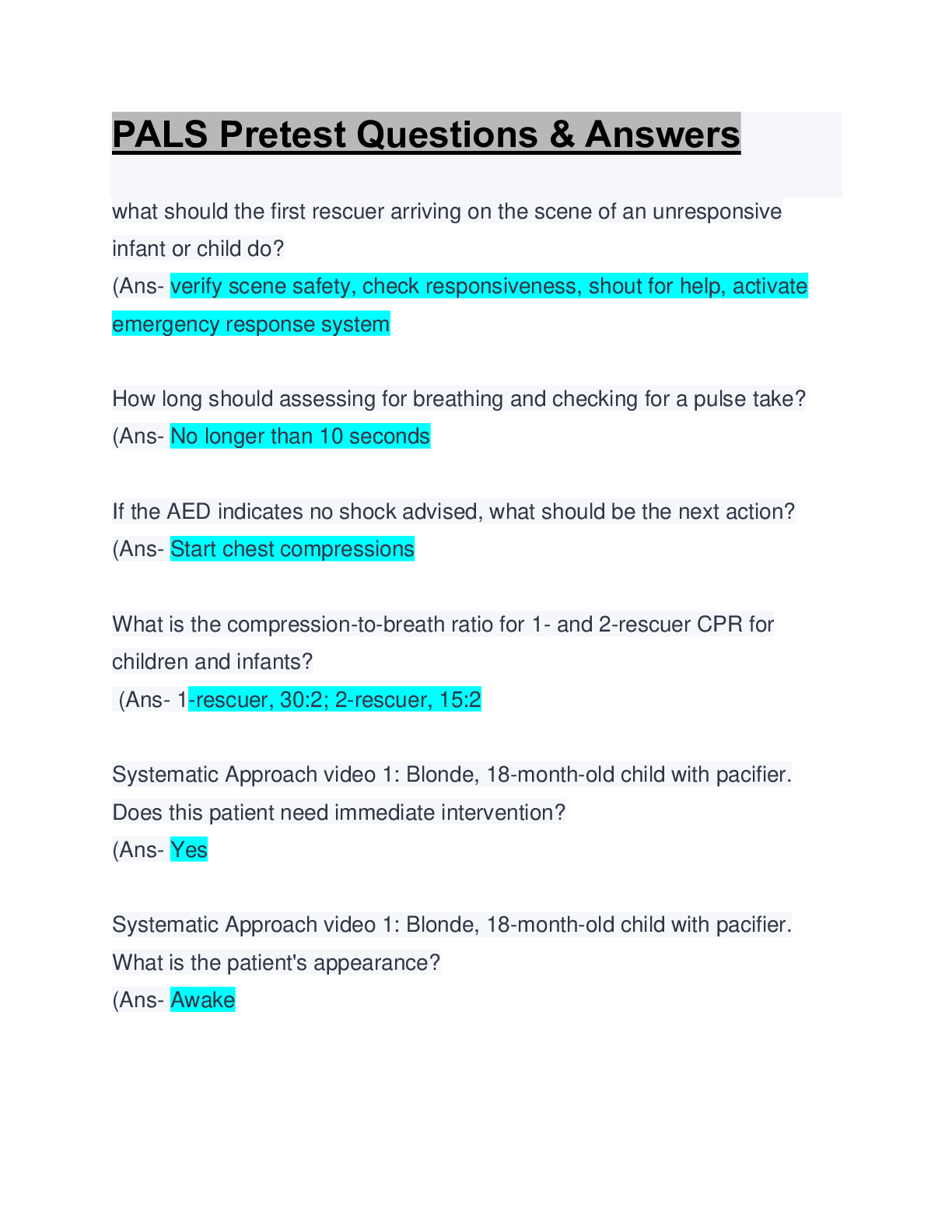CBMT Practice Test: Questions & Answers: Updated A+ Guide Solutions
Document Content and Description Below
A music therapist completes an assessment of a 3 year old with a profound developmental disability. The child responds to music by turning their head towards the sound consistently. The overall goal i... dentified by the treatment team is to increase the child's responsiveness to the environment. What is the music therapist's best approach towards this goal when creating and documenting the treatment plan? A. Adapt objectives from other team members. B. Create a hierarchy of objectives leading towards the desired outcome of therapy. C. Identify antecedent behaviors that precipitate the desired behavior. D. Consult with family and team about the child's music preferences and behaviors. (Ans- B. A hierarchy of objectives is a logical sequence of behavioral expectations leading toward the desired outcome of therapy. Creating and documenting a hierarchy is a key step of treatment planning. A client is being discharged from an inpatient psychiatric unit because the treatment team has decided the client no longer poses a danger to self or others, and an appropriate living situation in the community is available. When preparing the treatment summary, which of the following should the music therapist consider? A. The client met treatment goals in music therapy. B. The client should not be discharged due to limited progress in music therapy. C. The client should have a follow-up plan that addresses stressors that precipitated hospitalization. D. The client takes prescribed medications so community reintegration should be successful. (Ans- C. Patients may confront stressors that prompted them to seek inpatient care in the first place. Music therapists can work to help create a follow-up plan that proactively plans for discharge and takes these stressors into account (Silverman, 2015). The team member who is BEST positioned to enable a successful transition to the community following discharge from an adult behavioral health setting is the A. patient. B. psychiatrist. C. social worker. D. music therapist. (Ans- A. In order to successfully transition to the community from a behavioral health unit, the patient is encouraged to be involved in their treatment and independently use resources in the community. A child with ADHD has been referred to a music therapist for an assessment. The child's mother requested that the child be placed in a group setting to work on social interaction. During assessment, the child demonstrates extreme difficulty with movement and emotional regulation. Based on the assessment observations, which of the following is the music therapist's BEST action? A. Provide the child with group therapy placement to offer opportunities for regulation needs. B. Place the child in a group therapy environment to provide social interaction. C. Recommend the child receive individual sessions to address regulation needs before group placement. D. Determine the child would not benefit from music therapy at this time. (Ans- C. Using individual therapy first to address the emotional and movement regulation needs is the best approach. Once progress is made on an individual basis, group placement may be appropriate. Which of the following activities involves assessment of a client's functioning level in the area of sensory skills? A. playing a triangle to a steady beat B. sight-reading song lyrics C. selecting a piano melody D. music listening as a part of music-assisted relaxation (Ans- A. Sensory integration is required by the eye-hand coordination needed to hold the beater and strike the triangle. A group of 25 to 36-month-old toddlers gather for a weekly music and movement group. To learn an entire dance routine, the music therapist sets a storybook to music. Dance movements are introduced one at a time, and assigned to each page as the story is sung/read. Which of the following techniques is being used to integrate movement with music? A. modeling B. chaining C. errorless learning D. group contingencies (Ans- B. Chaining is the process of two or more responses being joined together systematically one at a time to teach the desired outcome. The pages of the storybook contain visual and musical cues that correspond with a specific movement. When presented this way, the learner is not inundated with too much information and links the movements to each other to result in a dance routine. If a music therapist has a sound recording, but no sheet music, the BEST strategy to determine the chord progression is to focus on the A. lead guitar. B. lead singer. C. electric bass. D. back-up vocals. (Ans- C. The electric bass usually plays the root of the chords in the basic harmonic progression needed to provide the accompaniment. [Show More]
Last updated: 1 year ago
Preview 1 out of 29 pages
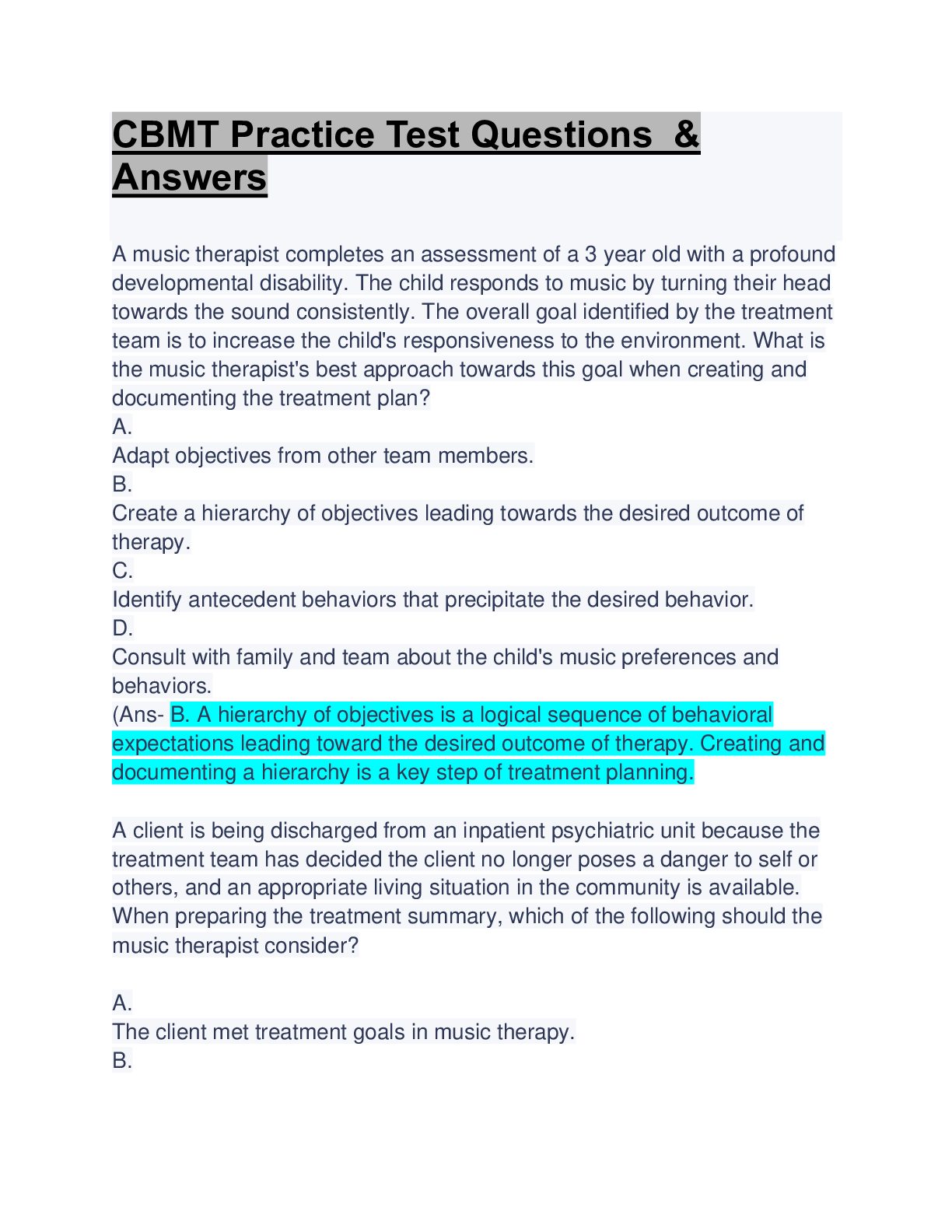
Reviews( 0 )
Document information
Connected school, study & course
About the document
Uploaded On
Apr 17, 2023
Number of pages
29
Written in
Additional information
This document has been written for:
Uploaded
Apr 17, 2023
Downloads
0
Views
50



